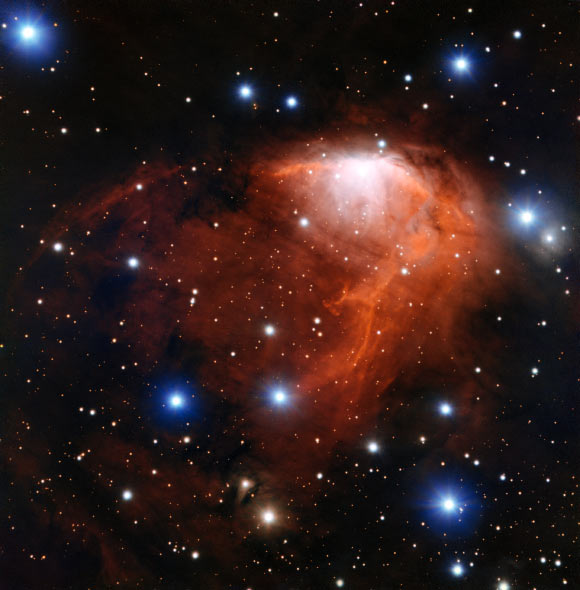Astronomers using the FOcal Reducer and low dispersion Spectrograph (FORS) on ESO’s Very Large Telescope in Chile have released a new image of a spectacular red cloud of glowing hydrogen gas called RCW 34.

This image of the nebula RCW 34 was taken using ESO’s Very Large Telescope in northern Chile. Image credit: ESO.
RCW 34, also known as Gum 19, is a star-forming region located in the southern constellation Vela, approximately 8,150 light-years away.
The object is very young, about 2 million years old, and contains a group of massive young stars.
These stars have a dramatic effect on the nebula. Gas exposed to strong UV radiation becomes ionized, meaning that the electrons have escaped the hydrogen atoms.
Stars are born from collapsing gas clouds and therefore abundant in regions with copious amounts of gas, like RCW 34.
This makes the cloud particularly interesting to scientists studying stellar birth and evolution.
Vast amounts of dust within RCW 34 block the view of the inner workings of the stellar nursery.
The nebula is characterized by extremely high extinction, meaning that almost all of the visible light from this region is absorbed before it reaches Earth.
Despite hiding away from direct view, astronomers can use infrared telescopes, to peer through the dust and study the nest of embedded stars.







